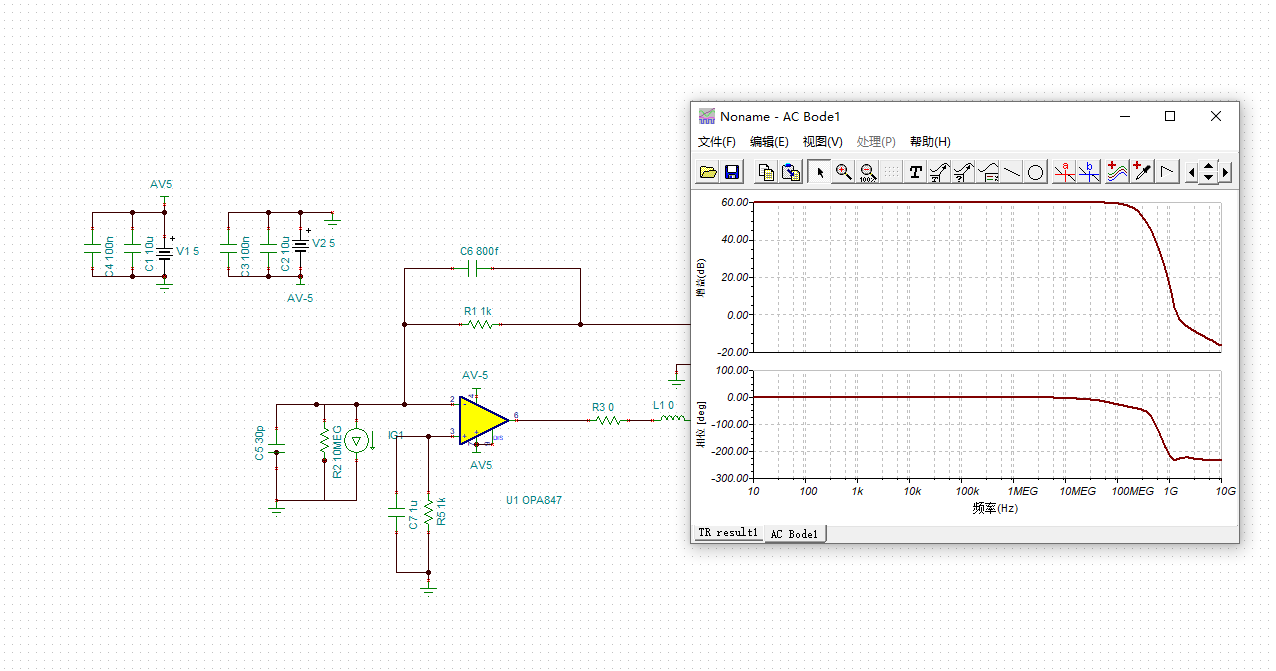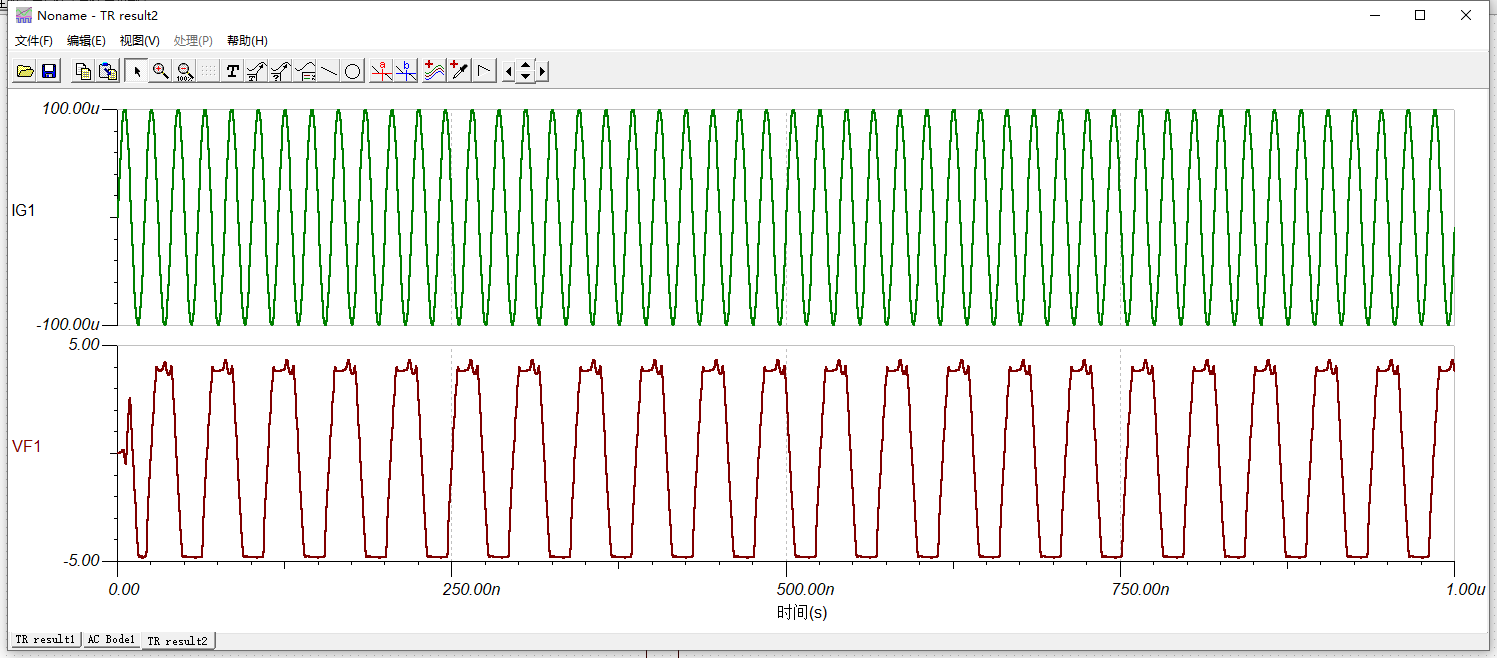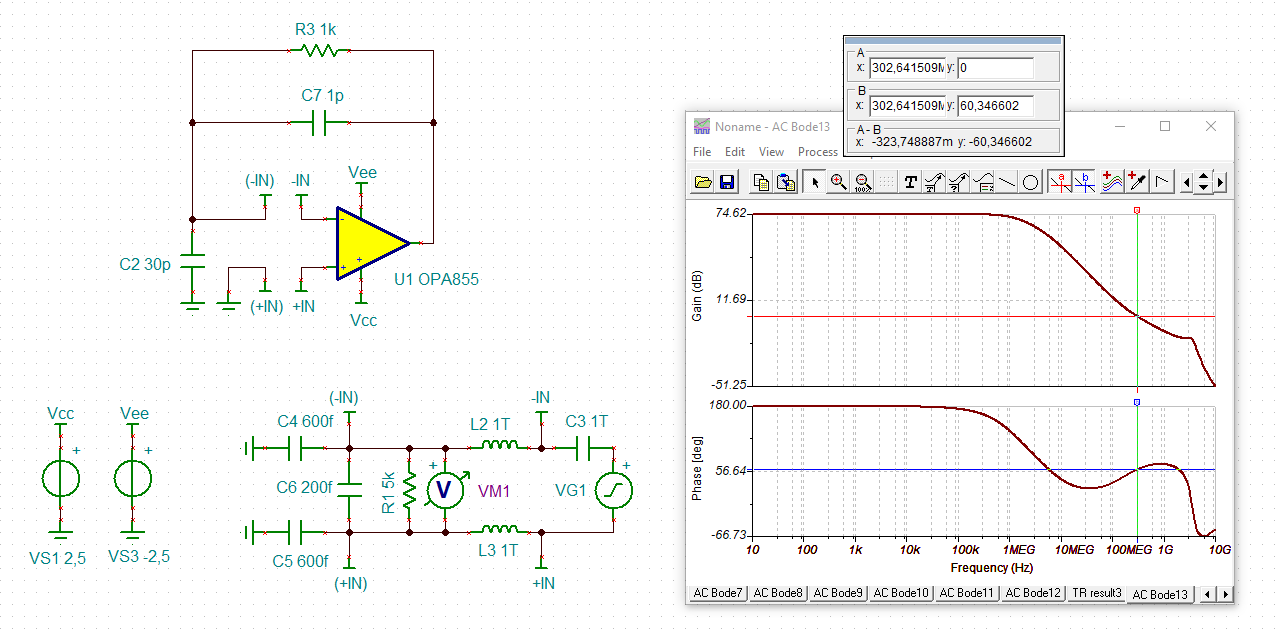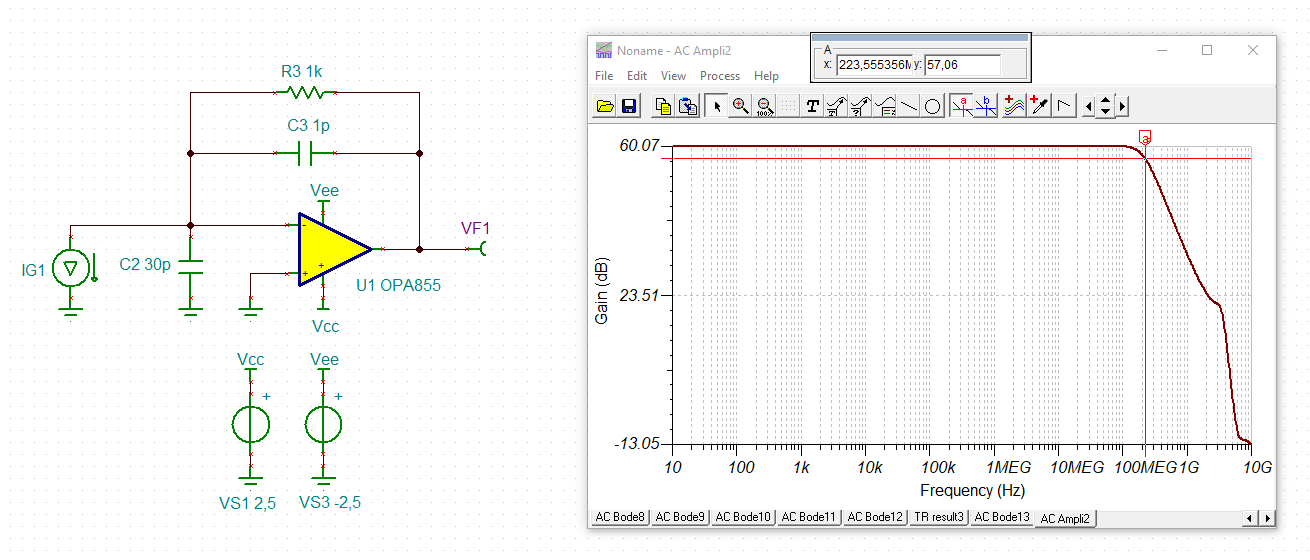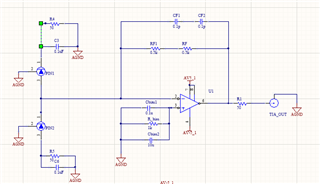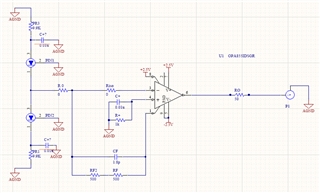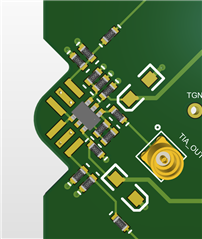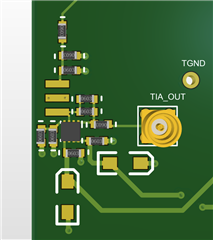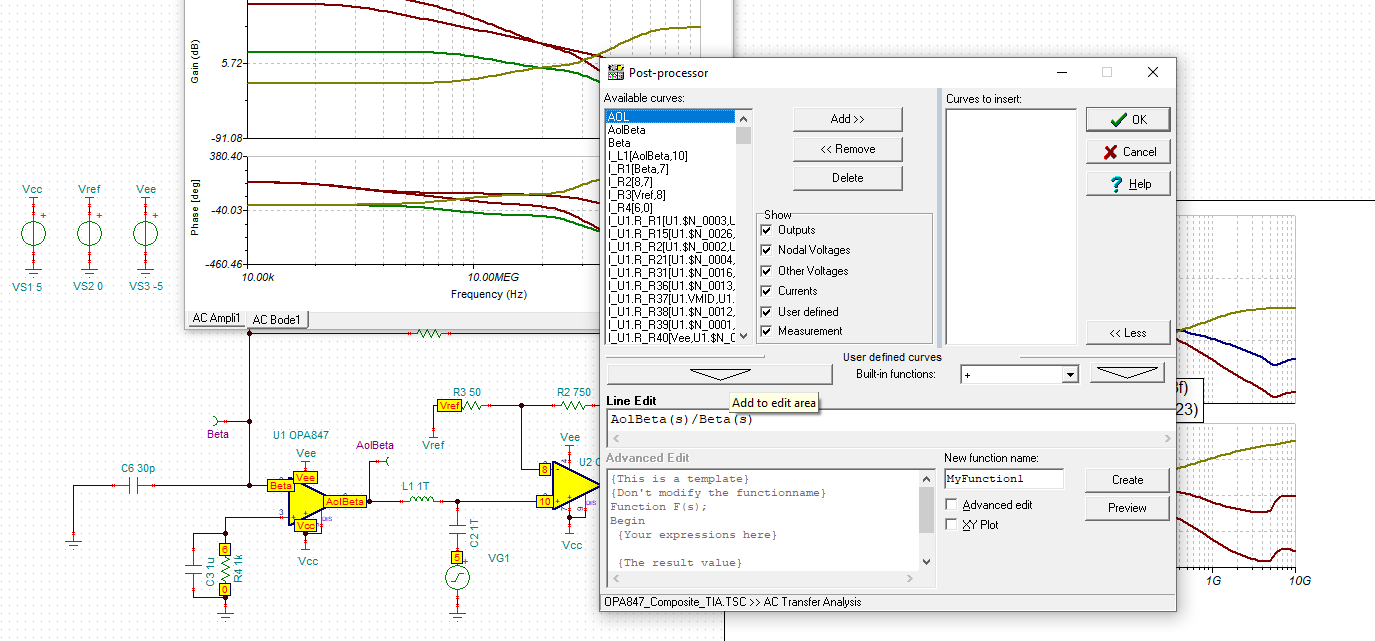Other Parts Discussed in Thread: OPA855
To achieve a TIA circuit with gain of 1kV/A and 200Mhz bandwidth ,using single opa847 seems not enough, I try to use the method of Embedded Gain Transimpedance Design which use 2 amps in its loop,such as below: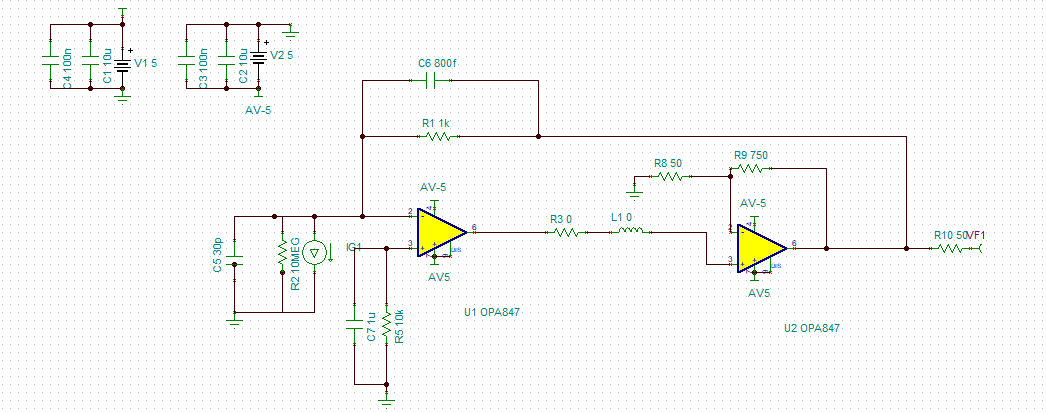
But the output is not stable in Tina simulation,as below:

So can anybody tell me how to fix this ?And this is my .tsc file.


